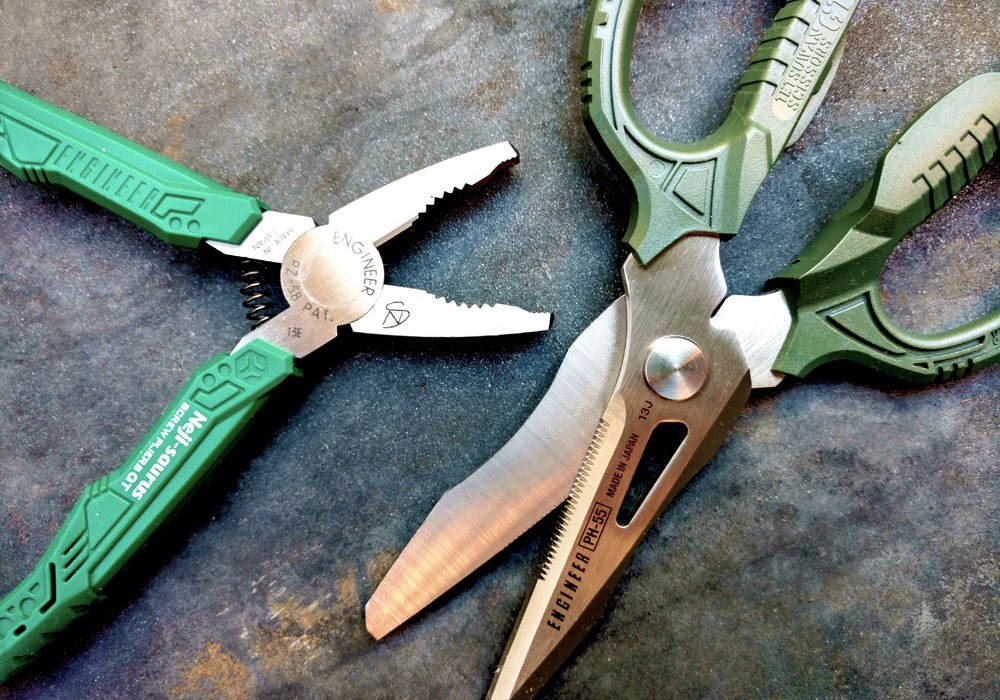The other day, the blower motor of my studio's HVAC system died.
The air handler is a large-volume, low-velocity unit (to minimize noise), and the access panel in the wall wasn't large enough to finesse the oversized blower out. My AC service technician gave up, and he asked me to open up the wall before he would return with a replacement blower motor. I ended up cutting a few strategic holes in the wall, dissembling various portions of the air handler through the holes, and rewiring some AC lines that were in the way. By the time I had successfully extracted the blower, I'd pulled out various hand and power tools, including a number of specialty tools that I've found useful over the years as a studio owner and "de facto first-line" tech.
The Milwaukee Offset Drive Adapter ($20 street) goes into the chuck of your 1/4'' electric/cordless driver (or drill) and angles the drive axis 75°, allowing you to fit the driver sideways into spaces that normally wouldn't accommodate the driver straight (e.g., inside of guitar amp cabinets). Milwaukee also makes a heavier-duty unit with a 90° turn, but I find that the 75° angle allows more clearance for the body of the driver.
I also have a collection of manual right-angle drivers, including the low-profile Neiko 3044A Mini Ratcheting Screwdriver ($9), which is great for light-duty work when there's very little room for maneuvering (e.g., the inside of gear faceplates), and the chunkier (but still compact) Maxcraft 60199 1/4'' Dual-Drive Mini Ratchet Driver ($10), which I pull out when I need more torque. A very cool feature of the Maxcraft is that on the backside of the 1/4'' bit holder is a standard 1/4'' square drive for sockets.
Speaking of driving sockets, another handy tool for use in tight spots (or for those moments when you don't need the torque of a full-size wrench) is the gimbal ratchet. Imagine a puck you can turn with your fingers while you hold it in the palm of your hand, and in the center of the puck is a socket drive "floating" within a universal joint. You spin the puck to turn your socket, and the puck can tilt in any direction up to 45° or so. I have several of these in different sizes, and my favorite are my GearWrench Gimbal Ratchets ($14-$16).
Another favorite tool is my Irwin Vise-Grip Powerslot Diagonal Cutting Pliers ($39). It's multi-hinged (with one hinge traveling down a slot) to increase power and reduce effort, and indeed, cutting Romex or multi-pair audio cable is a cinch. The 8'' model is rated for cutting 3 mm (9 AWG) solid wire. Powerslot cutters are manufactured by NWS in Germany, with ergonomic handles rebranded in Irwin's blue and yellow colorway.
Another cutting tool that gets a lot of use is the Engineer Tetsuwan Scissors ($22). It's ingeniously designed so that you can apply force comfortably with two hands for more cutting pressure, and the blades are shaped and serrated so you can cut things like rope, wire (solid copper up to 1.6 mm, 14 AWG), and sheets of fabric, rubber, plastic, and even aluminum. Blister packs are easily opened with these scissors. Plus, a section of one of the blades is designed to cut open cardboard boxes without harming the contents underneath.
Engineer also makes special screw-extracting pliers, whimsically called Neji-saurus ($19). The patented plier tips have special grooves and serrations to grab the heads of screws and bolts. This is the first tool I pull out to remove stripped fasteners, and most of the time, it works (which means I rarely need to grab my drill and set of screw-extractors).


